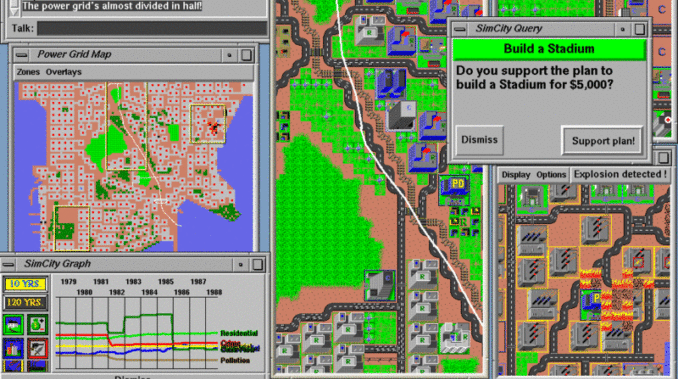
Collectible Card Games, when handled correctly, can be a cash cow. This has been proven by Pokemon cards, Yu-Gi-Oh cards, and the original CCG, Magic: the Gathering. Along the way, even games which died out have resulted in their publishing companies making significant money before the interest flagged for their products.
The money was certainly the incentive for one of the oddest CCGs, SimCity.
SimCity was one of the early smash successes in home computer gaming. It allowed players to zone areas for commercial, industrial or residential use, put up roads and railroads, install power plants, stadiums and other specialty buildings, and even call down tornadoes or giant monsters upon a city.
The developers at Mayfair Games saw the money Maxis, the producer of SimCity, had made off of their computer game and offered to create a card game using the product.
That’s when everything went horribly wrong.
After Magic: the Gathering, a slew of copycats hit the market, each looking for some of the money being thrown at the original game. These knockoffs often boasted inferior or grossly unbalanced play mechanics, as their creators tried to keep their products similar enough to Magic to draw followers but dissimilar enough to avoid the charges of outright theft.
Mindful of the potential criticism, SimCity was designed as a game which bore very little in common with Magic, and, really, very little in common with what would normally be called a “game”.
Players would take turns laying down cards in a series of phases, steadily developing their city until the game was over. Cards would need continuity of transit (roads, rails) or power lines to trigger some effects. Each player would typically sit there and just build their own cities, taking turns back and forth.
The only real interaction came on the rare occasions when one would play a disaster on an opponent’s city. Such an event typically had only two results: virtually no effect on the opponent, or eliminate any chance of them winning the game.
The recommended setup of the game suggested that every player mix their cards into one communal deck, which both undercut the main mechanic of CCGs (deck building) and required players to keep careful track of their cards, particularly the rare ones.
Then there were the double-length cards, designed so that they would take the place of two city blocks. While Magic and other CCGs would later experiment with oversized cards, SimCity was the first two incorporate two sizes in the booster packs.
But before you were allowed to lay one of the double-sized cards down on your city, you’d have to win a vote of the various council members at the table. That way, the rare bit of excitement which might be generated by playing an oddity could be tamped down before it had a chance to grow.
Despite a strong publicity campaign, multiple booster packs of famed cities, and a popular game as its inspiration, the SimCity CCG died a quick and deserved death.
Here’s a video with some of the cards:
Question of the night: What’s a distinctive location in your home town or city?
